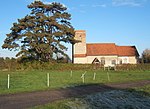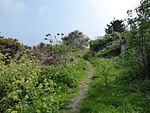Suffolk is a county in East Anglia. It is bounded by Norfolk to the north, Cambridgeshire to the west, Essex to the south and the North Sea to the east. With an area of 1,466 square miles (3,800 km2), it is the eighth largest county in England, and in mid-2016 the population was 745,000. At the top level of local government is Suffolk County Council, and below it are 5 borough and district councils: Babergh, Ipswich, Mid Suffolk, West Suffolk and East Suffolk. Much of the coast consists of the estuaries of the Orwell, Stour, Alde, Deben and Blyth rivers, with large areas of wetlands and marshes. Agriculture and shipping play a major role in the county's economy.In England, Sites of Special Scientific Interest (SSSIs) are designated by Natural England, a non-departmental public body which is responsible for protecting England's natural environment. Designation as an SSSI gives legal protection to the most important wildlife and geological sites. As of October 2017 there are 142 SSSIs in Suffolk, of which 109 are biological, 28 geological and 5 are designated under both criteria.
One site is in the Dedham Vale, an Area of Outstanding Natural Beauty (AONB), and thirty-six are in another AONB, Suffolk Coast and Heaths. There are thirty-three Geological Conservation Review sites, twenty-three Nature Conservation Review sites, twenty Special Areas of Conservation, thirty Special Protection Areas under the European Union Directive on the Conservation of Wild Birds, eight Ramsar internationally important wetland sites, seven national nature reserves and four contain scheduled monuments. Six sites are local nature reserves, twenty-seven are managed by the Suffolk Wildlife Trust, five by the Royal Society for the Protection of Birds and one by the National Trust. The largest is Breckland Forest at 18,126-hectare (44,790-acre), which is partly in Norfolk and has several invertebrates on the IUCN Red List of Threatened Species, and the smallest is a 0.1-hectare (0.25-acre) meadow in London Road Industrial Estate, Brandon, which has the largest known wild population in Britain of the nationally rare sunflower Artemisia campestris.









